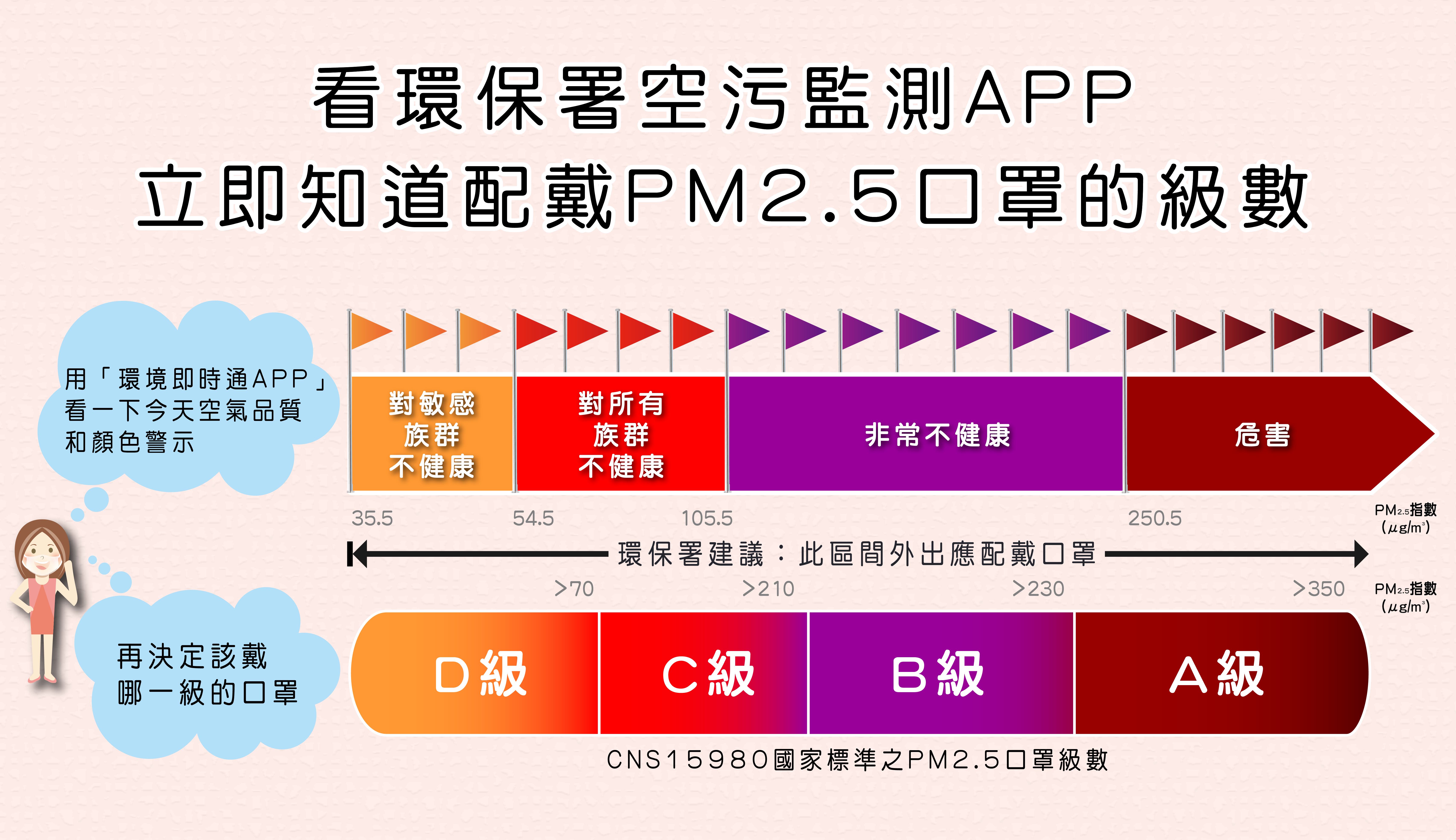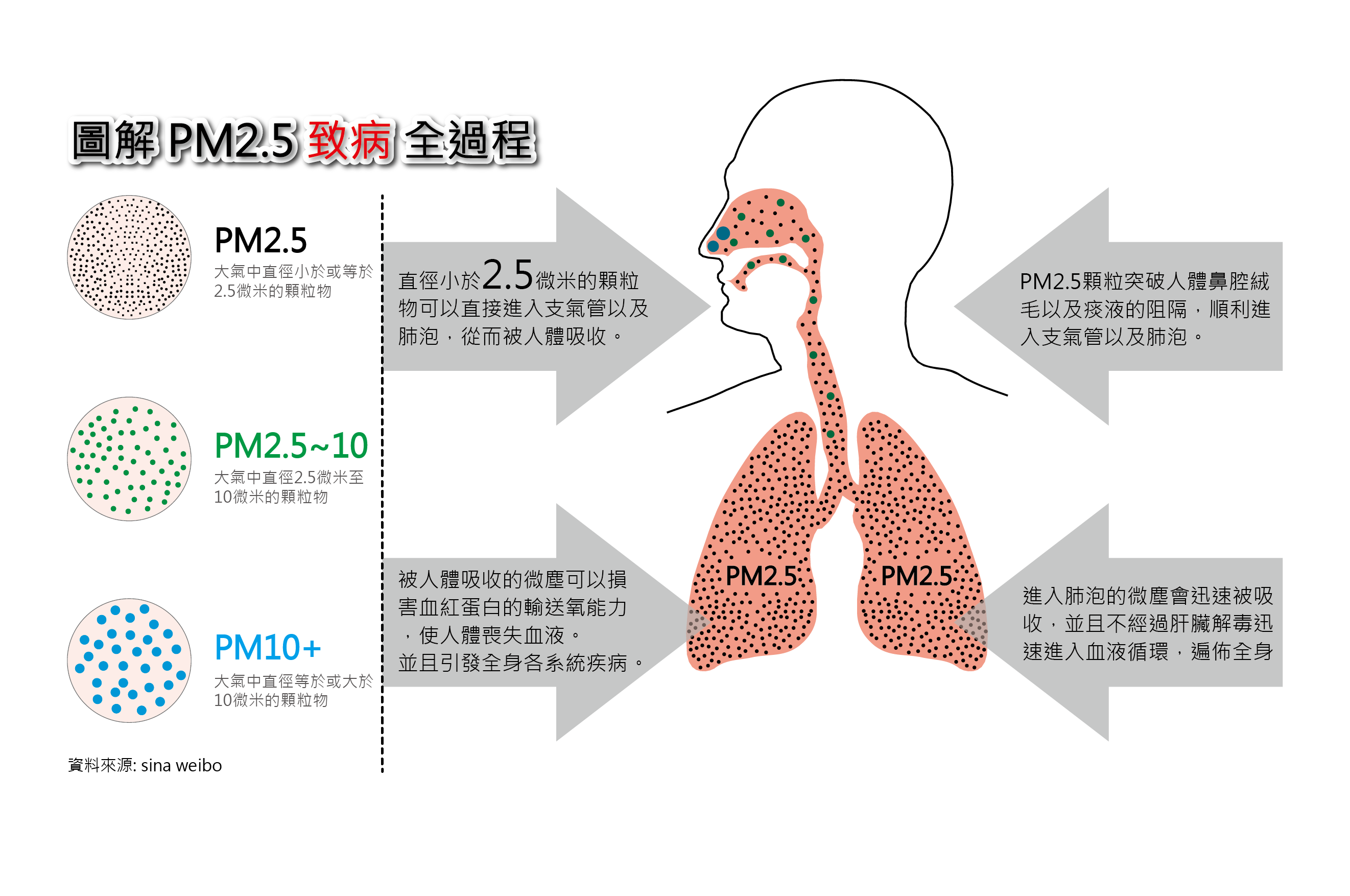-
What harm does PM2.5 do to human body?
- PM2.5 is “fine particulate matter” with a diameter of 2.5 micrometers or less, which can penetrate deep into the lungs and cause inflammation, cardiovascular diseases, asthma symptoms and other conditions in the lungs. In addition, other pollutants attached to PM2.5 will further damage the respiratory system.
- PM2.5 not only causes asthma, lung cancer, cardiovascular disease, congenital diseases and early death. USA study showed that women exposed to high PM2.5 levels for a long period of time are five times more likely to develop breast cancer than the general population.
-
Why PM2.5 is called “invisible killer”?The human eye can see the critical value of 50 microns, is 20 times of PM2.5! Therefore, when the air is filled with PM2.5, it is difficult for ordinary people to feel it with the naked eye or other body perceptual organs, as if it is “invisible”. The most troublesome thing is that PM2.5 absorbs toxic substances such as heavy metals, dioxins and bacteria in the atmosphere, and as the human body breathes into the body, directly into the deepest part of the lungs, into the alveoli and even vascular circulation, greatly increases the incidence of cardiovascular and pulmonary line cancer, and the possibility of respiratory diseases, even death, so PM2.5 is called “invisible killer”.
-
Source of PM2.5 in Taiwan?There are many reasons for PM2.5, including petrochemical plants, iron and steel industry, electric power industry, as well as human factors such as exhaust emissions of motorcycles. In addition, Taiwan also faces the threat of smog in mainland China. In winter, due to the influence of northeast monsoon, there is a large amount of pollution, which significantly increases the PM2.5 index. According to the study, the source ratio of PM2.5 in Taiwan is 20% from overseas such as the smog in China, and traffic pollution accounts for 30%, while industrial pollution accounts for half of the total ratio, which is the largest source of PM2.5.
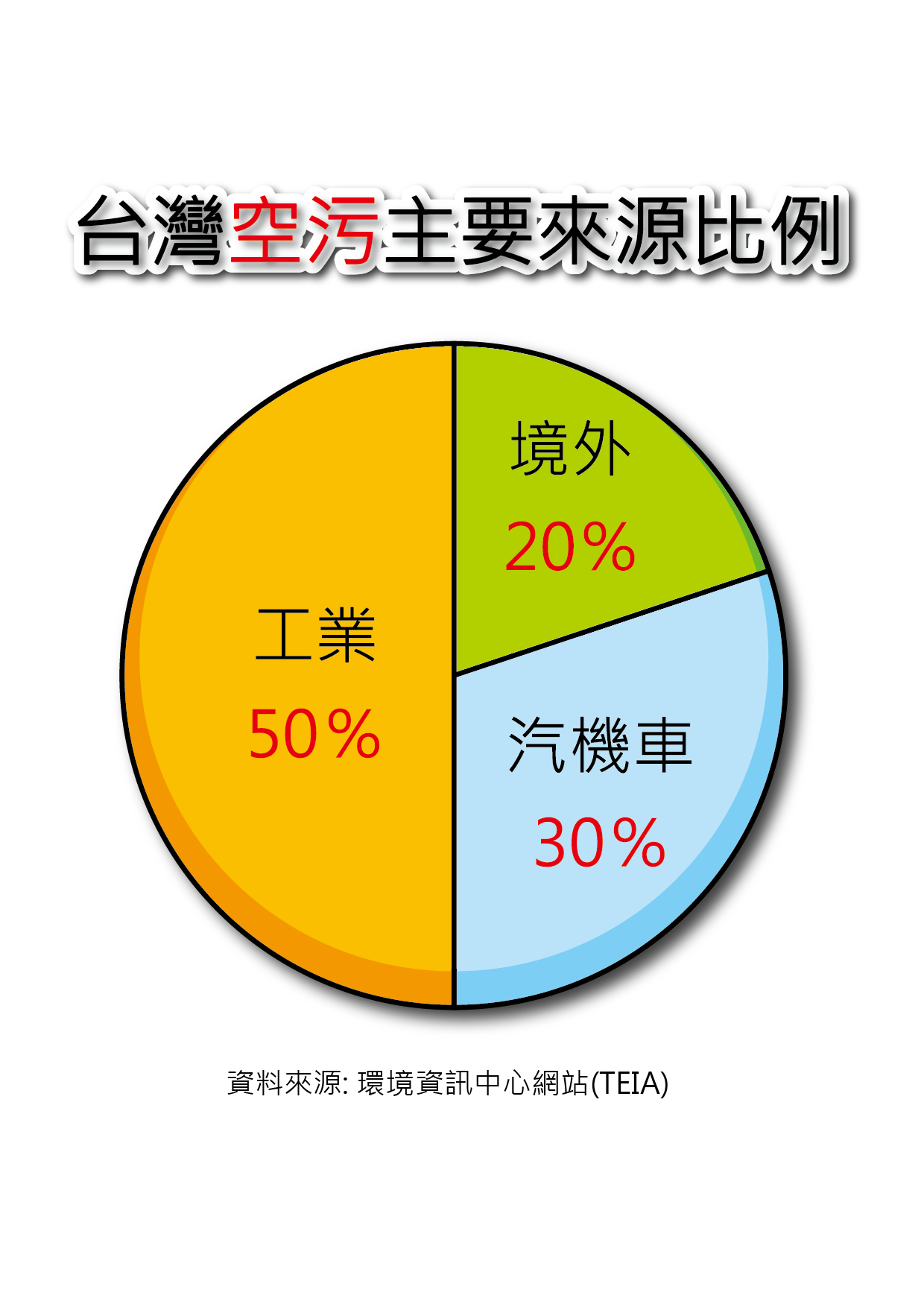
-
Does PM2.5 also exist in the interior/car?PM2.5 is a fine suspended particle in the air. If there is an exchange between the indoor air and the outside environment, there may still be PM 2.5 indoors and in the cars.
-
How to determine the PM2.5 index in my region?
- To determine the PM2.5 index of the region, you can download the APP “Environment Info Push” developed by the Environmental Protection Administration of the Executive Yuan to get the local air quality AQI index and PM2.5 index.
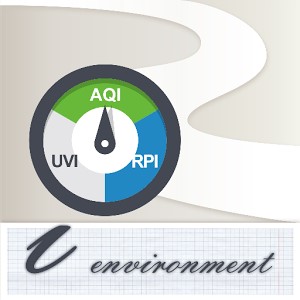
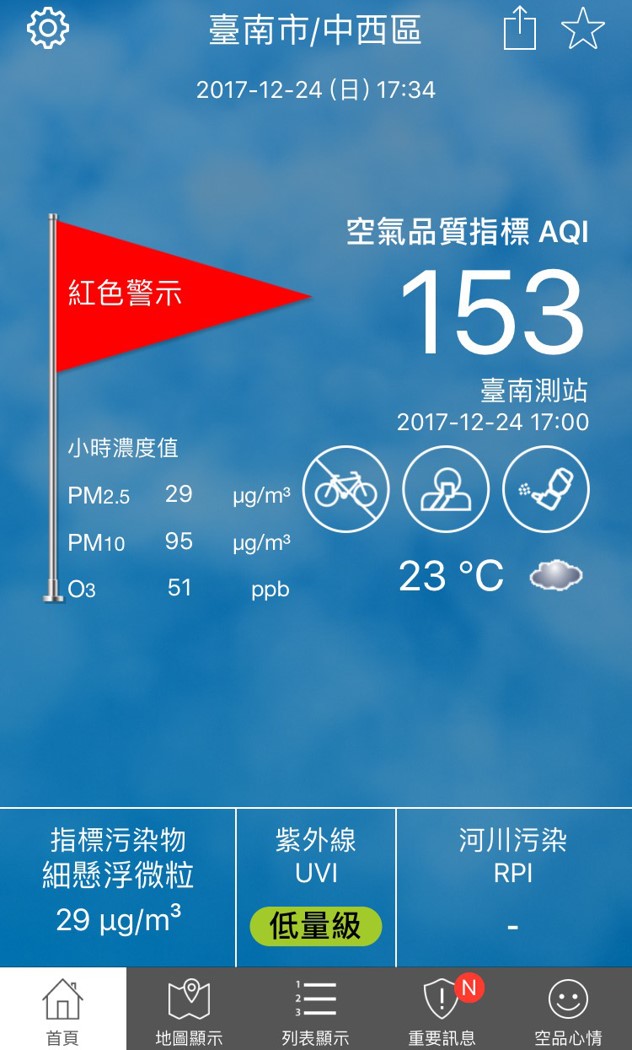
- To determine the PM2.5 index of the region, you can download the APP “Environment Info Push” developed by the Environmental Protection Administration of the Executive Yuan to get the local air quality AQI index and PM2.5 index.
-
Air pollution detection APP recommended1.Environment Info Push -- official information with multiple monitoring projects
Provide regional air quality index (AQI), air pollution concentration, weather, humidity, ultraviolet radiation and other information. It is worth mentioning that this APP has the function of forecasting and warning, and actively reminds you to avoid areas with poor air quality.
▶ download the Environment Info Push
iOS: https://goo.gl/LvXfJF
Android: https://goo.gl/NYHGk4
2.EdiGreen Air Box-- The measuring station is with low altitude and high density, which is more accurate
Developed by Academia Sinica in collaboration with non-governmental organizations, it provides information including PM2.5 concentration, temperature and humidity. Because the altitude of the station is lower than that of the official station and its distribution is more intensive, it can provide more real-time measurement results and close to the real situation of the site, and the operation interface is simple and easy to understand.
Download EdiGreen Air Box
iOS: https://goo.gl/QrusDo
Android: https://goo.gl/9xgaTV
-
What masks should I wear to protect myself from PM2.5?Please specify that the masks that “pass the Taiwan National Qualification Standard test of at least 6 items of CNS 15980” Performance Index and Test Method of Anti-smog (PM2.5) Mask” are the real anti-smog mask with PM2.5 protection effect!
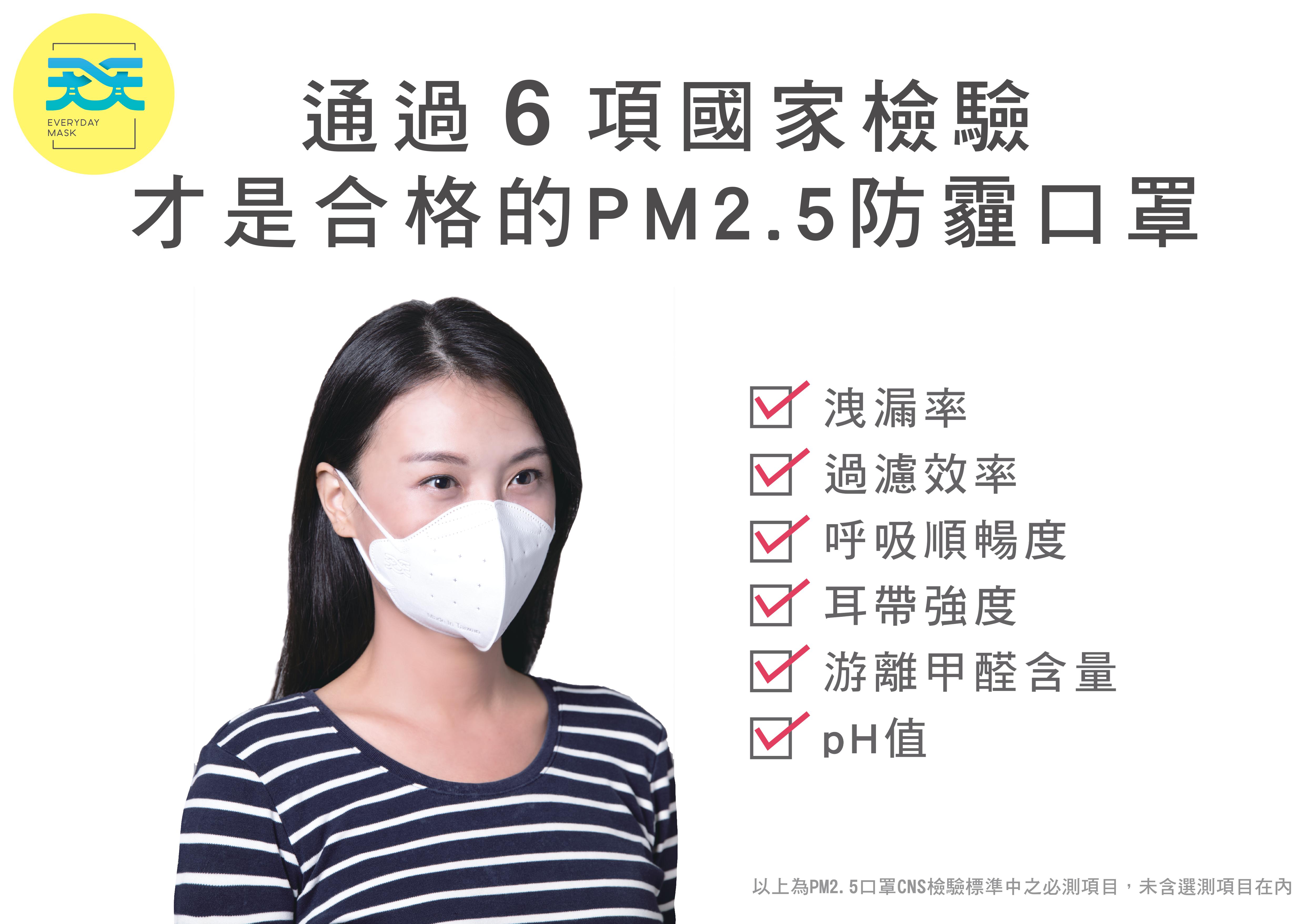
-
Do PM2.5 masks have the same specifications as medical masks?In view of PM2.5 smog-proof masks, the government announced in June this year the Taiwan National Qualiflcation Standard of CNS 15980 “Performance Index and Test Methods of PM2.5” masks, and divided them into four classes : A, B, C and D according to their protective effects. Among them, “at least six testing items must be passed” are “protective effect of granular material” (measuring the protection efficiency of masks), “filtration efficiency-method A (sub-micron)” (testing the filtration efficiency with a single particle size that is most difficult to capture), “Inhalation & Exhalation Resistance” (measuring the permeability of masks), “fracture strength of the connection between masks ear loops or headband and the body”, “free formaldehyde content” and “pH value”, which are required items to qualify PM2.5 smog-proof masks.
-
What are the testing items of the latest PM2.5 smog-proof mask of CNS15980:2017?The testing items of CNS 15980:2017 :
.jpg) Compulsory:- Protective effect of granular material: particle protection efficiency test, protection efficiency will affect particle filtration effect, the higher the protection efficiency, the better the protection.
Compulsory:- Protective effect of granular material: particle protection efficiency test, protection efficiency will affect particle filtration effect, the higher the protection efficiency, the better the protection.
- Inhalation & Exhalation Resistance: measure the air permeability and breathing smoothness of the mask. Low air permeability can easily reduce the blood oxygen concentration, which may lead to dizziness, chest tightness and other phenomena.
- Fracture strength of the connection between masks ear loops or headband and the body: measure the ear loops strength, > 20 (N), PM2.5 needs to be highly fitted to prevent PM2.5 leakage and reduce protective force, so ear loops or headband must have certain strength to ensure the mask tightness.
- Free formaldehyde content: content less than 20 (mg/kg). Textiles containing formaldehyde will release free formaldehyde during use and wearing, which will strongly stimulate human respiratory mucosa and skin.
- pH value: the standard one should be between 4.0 and 7.5. The pH value of water extraction of textiles in neutral to weak acidic conditions is most beneficial to human skin.
- Filtration efficiency-method A (sub-micron): the filtration efficiency is measured by the single particle size which is the most difficult to capture
Selective:
-Filtration efficiency- method B: measure the filtration efficiency of particles with different sizes, and then take the average value.It is better to filter them based on the filtering principle since sizes may be different.
- Ethylene oxide residue: The masks with sterilization need to be tested, and the residue should be less than 10 (ug/g).
According to the sample design, the selective test should be conducted:
- Azo dyes derived from specific aromatic amines: should not be detectable azo dyes containing carcinogenic aromatic amines may be hazardous to human health
- Fastness of respiratory valve cover: It needs to be tested only when the respiratory valve is installed. The respiratory valve cannot slip, break and deform.
- Color fastness to rubbing: the color fastness should be ≥4. If the dye can be fixed permanently on the textile without transferring to the skin, it will not cause harm to the human body.
Conduct selective test according to customer demands:
- Biological load: divided into “escherichia coli (not detectable)”, “pathogenic pyogenic bacteria (not detectable)”, “total number of fungal colonies (< 100)” and “total number of bacterial colonies (< 200)”, and tested according to the needs of use.
-
Does the latest national PM2.5 test of CNS 15980:2017 have classing? Suggestions for wearing at all levels?The protective effect of PM2.5 mask can be divided into four classes: A, B, C and D. According to the PM2.5 concentration in the environment, the applicable PM2.5 concentration values (μg/m3) are <350/<230/<140/<70, respectively. Suggestions for wearing PM2.5 mask level are provided.
